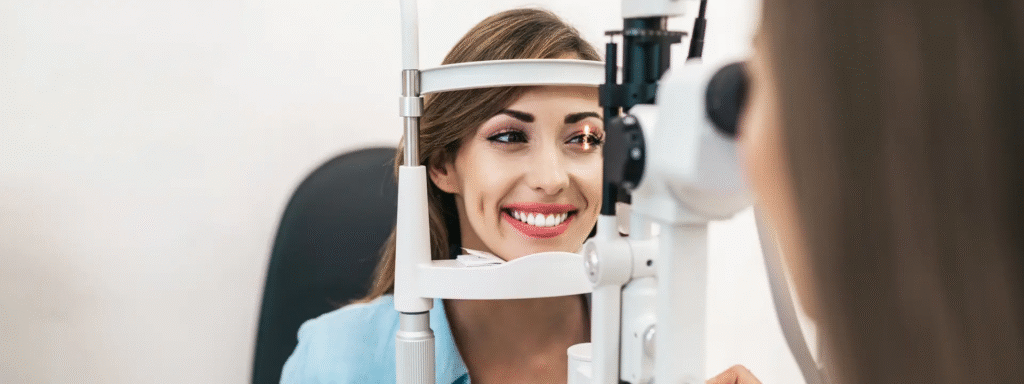Are you tired of looking tired — even when you’re well-rested? Drooping eyelids can make you appear older, fatigued, or less alert. If this sounds familiar, ptosis correction surgery may be the solution you’ve been looking for. With Korea’s world-renowned expertise in eyelid surgery, patients from around the world are turning to Korean plastic surgery clinics for natural, rejuvenating results.
What Is Ptosis?
Ptosis (pronounced TOE-sis) refers to the drooping of the upper eyelid. It can affect one or both eyes and ranges from mild to severe. In more advanced cases, ptosis can partially or fully block vision, especially in older patients. The condition may be congenital (present at birth) or acquired over time, often due to muscle weakening, nerve damage, or aging.
What Is Ptosis Correction Surgery?
Ptosis correction, also known as blepharoptosis repair, is a specialized surgical procedure that lifts the upper eyelid to a more youthful, natural position. The goal is not just cosmetic — ptosis correction improves vision clarity, eye symmetry, and facial expression, making patients look more awake, energized, and refreshed.
Depending on the severity and cause of ptosis, a surgeon may:
- Tighten or shorten the levator muscle (responsible for lifting the eyelid)
- Attach the eyelid to the frontalis muscle (forehead) for severe cases
- Combine ptosis correction with double eyelid surgery for enhanced aesthetic results
Signs You May Need Ptosis Correction
- Constantly raising your eyebrows to lift your eyelids
- Looking tired or disinterested due to heavy upper lids
- Vision obstruction in your upper field
- Uneven or asymmetrical eyes
- Chronic eye strain or headaches
Why Choose Korea for Ptosis Correction?
South Korea is globally recognized for its cutting-edge aesthetic techniques and high standards of surgical precision. Korean plastic surgeons undergo extensive training in oculoplastic and cosmetic eyelid procedures, offering highly customized care that blends medical function with refined aesthetics.
Benefits of Ptosis Surgery in Korea for International Patients:
- Board-certified plastic and oculoplastic surgeons
- Minimally invasive techniques with small incisions and fast recovery
- Natural-looking results tailored to Asian and Western eye anatomy
- Bilingual care teams for international patient support
- Comprehensive medical tourism packages, including aftercare, lodging, and translation services
The Ptosis Surgery Process: What to Expect
1. Consultation & Diagnosis
The surgeon evaluates your eye structure, eyelid function, and muscle strength. Pre-surgery measurements and tests help create a personalized surgical plan.
2. Surgery Day
The procedure typically lasts 30 to 60 minutes under local anesthesia with sedation. Incisions are made in the eyelid crease to minimize visible scarring.
3. Recovery Timeline
- Mild swelling and bruising for 1–2 weeks
- Most patients return to daily life within 5–7 days
- Full results become visible over several weeks
Can Ptosis Correction Be Combined with Other Procedures?
Yes! Ptosis correction is frequently combined with:
- Double eyelid surgery for defined eye creases
- Blepharoplasty to remove excess eyelid skin
- Canthoplasty to refine eye shape
- Eyebrow lift for enhanced upper facial rejuvenation
Natural, Youthful Results — Not “Overdone”
A common concern is whether ptosis surgery will make the eyes look artificial or surprised. In Korea, surgeons emphasize subtle enhancement — lifting the eyelid just enough to open the eyes naturally while maintaining harmony with your facial features. The result? A more rested, youthful appearance without dramatic change.
Is Ptosis Correction Right for You?
You may be a candidate if:
- You have visibly drooping upper eyelids
- You experience blocked or impaired vision
- You want a more refreshed, symmetrical appearance
- You are in good health and have realistic expectations
Cost of Ptosis Correction in Korea
While prices vary by clinic and case complexity, medical tourists can expect:
- Mild ptosis correction: USD $1,800–$3,000
- Severe or functional ptosis correction: USD $2,500–$4,500
- Combo with double eyelid surgery: USD $3,000–$5,500
Many clinics offer consultation packages that include pre-op exams, post-op care, translation services, and accommodation.
Final Thoughts: Reclaim Your Bright, Confident Gaze
Ptosis correction is more than just an aesthetic improvement — it’s a life-enhancing procedure that helps restore clear vision, eye symmetry, and a youthful facial expression. By choosing an experienced Korean plastic surgery clinic, you’re ensuring the safest techniques, precise results, and compassionate care throughout your journey.




